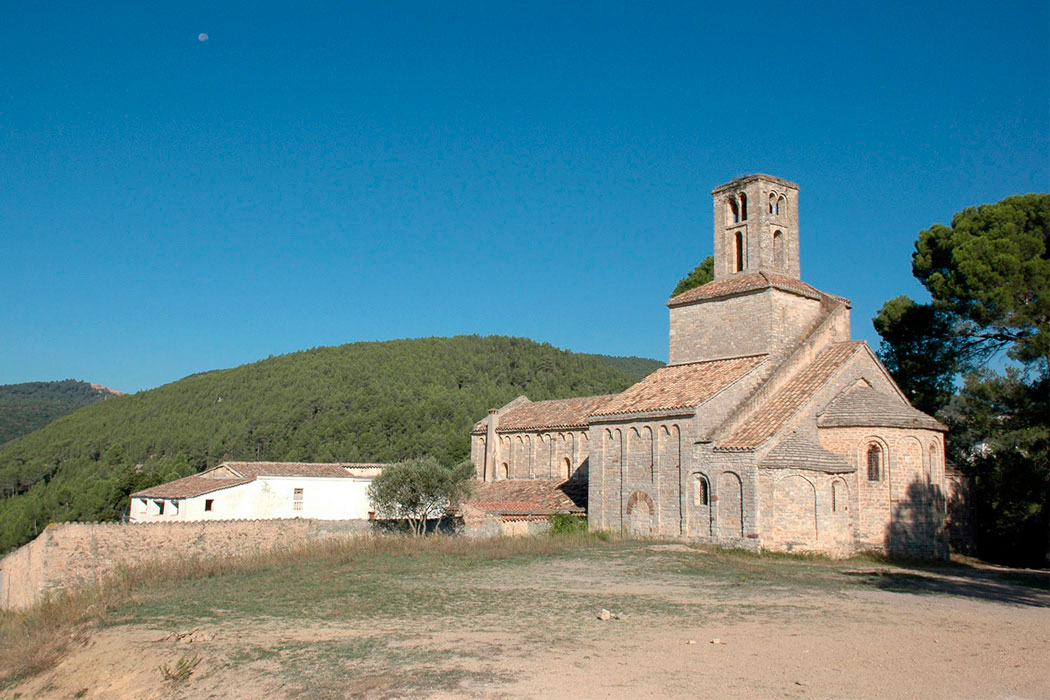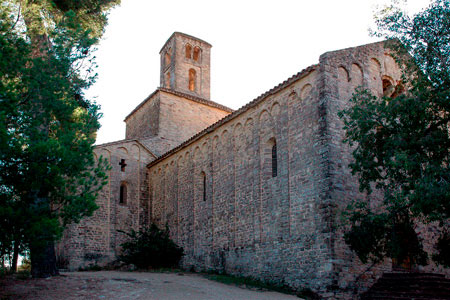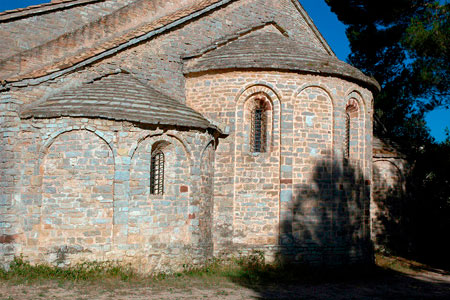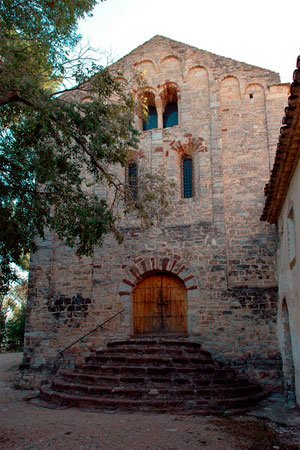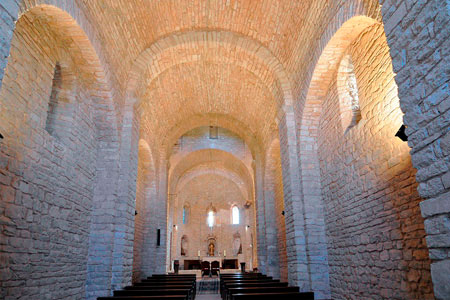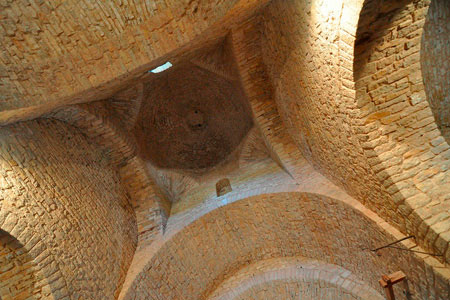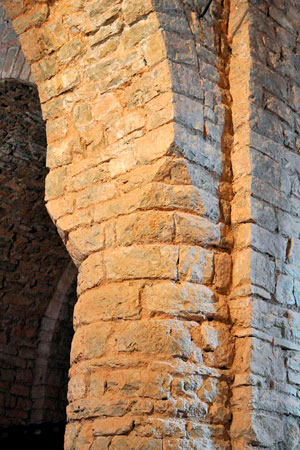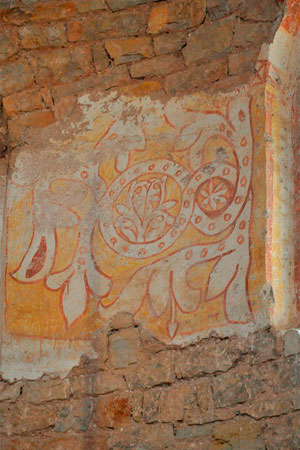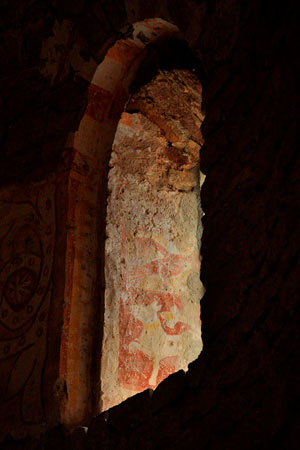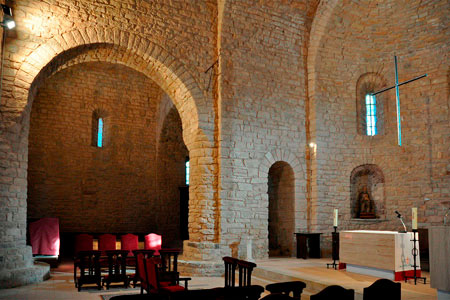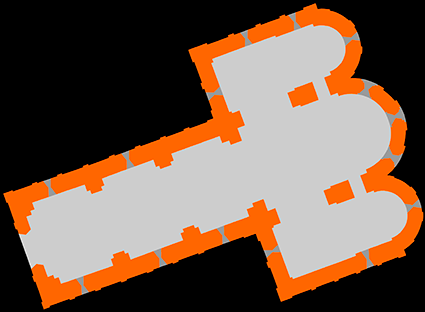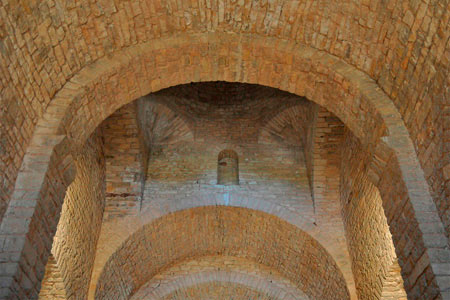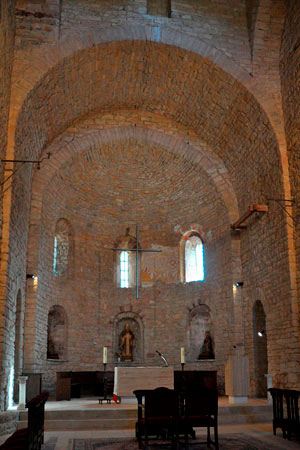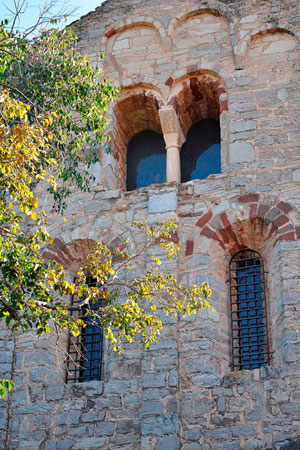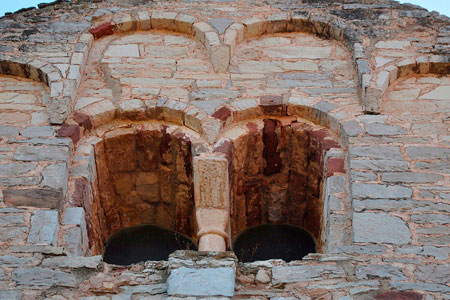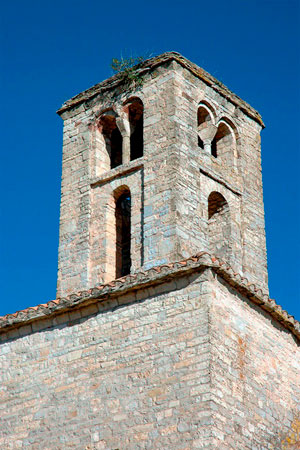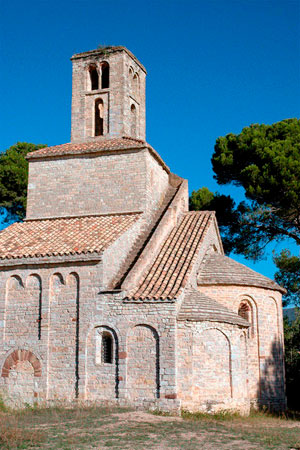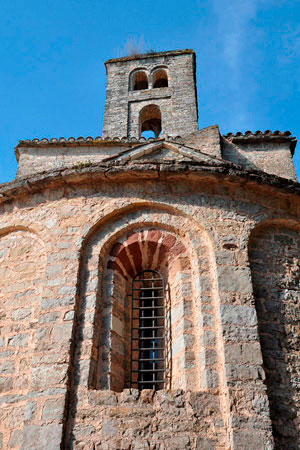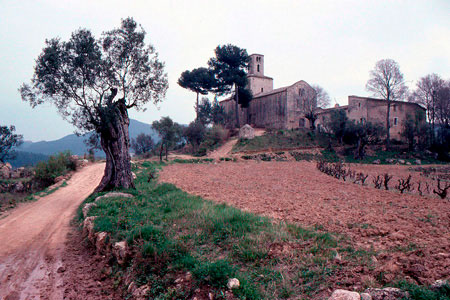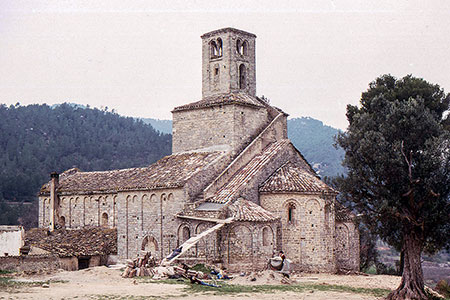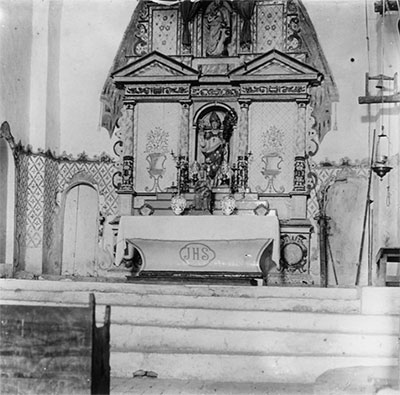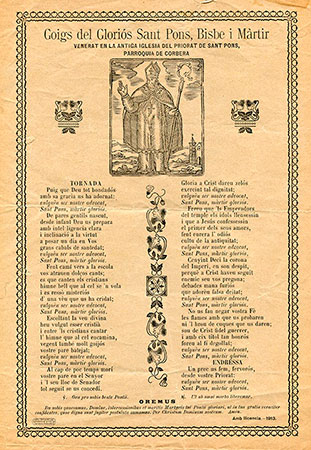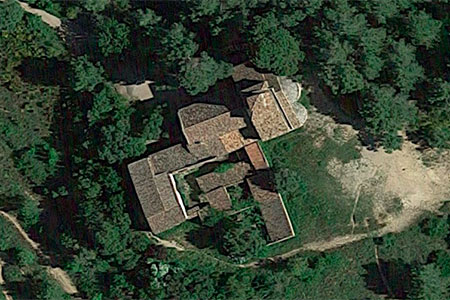The church of Sant Ponç de Corbera is mentioned for the first time in 1068, and shortly afterwards, in 1085, it received a testamentary bequest from the bishop of Barcelona, Humbert de Cervelló, which shows the link between this lineage and the place.
We should consider the possibility that this church was a foundation of the Cervelló house, started by Alemany de Cervelló (brother of Bishop Humbert) with the intention of making it the seat of the family pantheon. This would be consistent with the most likely date for the construction of the church. The first mention of the priory is found in a document from 1096, in which the prior Salomó de Sant Ponç intervened, possibly having been founded a few years earlier. Almost from the time of its foundation, there is evidence that it was subject to Cluny through Sant Pere de Casserres (Osona). It is mentioned again in 1235, when the prior Riambau took in Pere de Cornellà as a cleric.
It was always a very small monastery, in fact the priors were monks from Casserres, where they usually lived. It could have a couple of monks in Sant Ponç, as well as clerics at the service of the surrounding population. The beginning of the 14th century brought a series of disagreements with the bishopric of Barcelona due to the refusal of the priors of Sant Ponç to facilitate pastoral visits claiming that they depended on Casserres and, ultimately, on Cluny. This confrontation culminated in 1310 with the excommunication of the prior and the priest of Sant Ponç, which lasted until 1314, when the visitor was allowed to enter the monastery.
The decline worsened in the mid-14th century, possibly related to that of Sant Pere de Casserres. A period of commendatory priors followed (there is evidence of this in 1550), some of whom were not even monks. In the second half of the 16th century, it was linked to the Benedictines of Sant Pau del Camp, who possibly limited themselves to collecting the rents of Sant Ponç. It ceased to be a priory, becoming a parish dependent on Santa Maria de Corbera. As a parish it also lost vitality, and the place became abandoned.
The remains of the priory are practically limited to the church of Sant Ponç, although the adjoining buildings could mask the remains of the old monastic establishment. The church is a magnificent example, which architecturally does not match the lack of vitality of the community that occupied it; perhaps the expectations of the Cervelló family, the supposed promoters of the building, were higher than what they achieved. It is a single nave building with a barrel vault and toral arches supported by attached pilasters. It has a transept with three semicircular apses, the central one with three semicircular niches (not visible from the outside) and three windows in the upper part.
There is a hemispherical dome at the intersection of the nave and transept. The façade has a single door, above which there is a pair of windows and above it a twinned opening. The exterior of the dome is square in plan, with a bell tower above it, which is reached by an external staircase. The apses are attached to a body with a double-sloped roof. The building dates to the 11th century and has been restored several times, between 1929 and 1992.
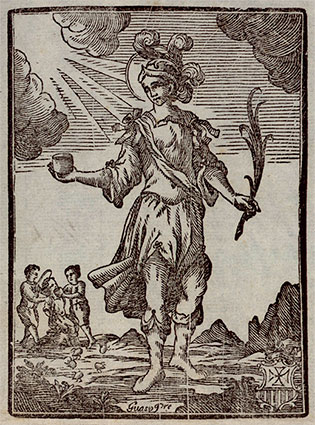
Mémonum, Montpeller
- GAVÍN, Josep M. (1988). Inventari d'esglésies. Vol. 21. Baix Llobregat. Barcelona: Arxiu Gavín
- MARTÍNEZ, Albert i altres (1991). Estudis d'història de Corbera de Llobregat. Barcelona: Publicacions e l’Abadia de Montserrat
- MIQUEL I VIVES, Marina; VILA CARABASA, Josep M. (1990). Memòria científica de l'excavació de l'església de Sant Ponç de Corbera (Cervelló, Baix Llobregat). Generalitat de Catalunya
- MIQUEL I VIVES, Marina; VILA CARABASA, Josep M. (1994). L'església de Sant Ponç de Corbera (Cervelló, Baix Llobregat). Generalitat de Catalunya
- PAGÈS, Montserrat (1987). Sant Ponç de Corbera. Baix Llobregat, Butlletí del Centre d’Estudis Comarcals. Núm. 12. Sant Feliu de Llobregat
- PAGÈS, Montserrat (1992). Sant Ponç de Corbera. Catalunya Romànica, vol. XX. Barcelona: Enciclopèdia Catalana. Barcelona
- PLADEVALL I FONT, Antoni (2004). Sant Pere de Casserres o la presència de Cluny a Catalunya. Fundació Caixa Manlleu
- PUIG I CADAFALCH, Josep, i altres (1911). L'arquitectura romànica a Catalunya. Vol. II. Barcelona: I. E. Catalans
- VIGUÉ, Jordi; PLADEVALL, Antoni; BOU, Emili; CARBONELL, Eduard (1974). L'església romànica de Sant Ponç de Corbera. Segle XI. Barcelona: Artestudi
- VILA CARABASA, Josep M. (2012). Memòria de la intervenció arqueològica a l'entorn de l'església de Sant Ponç de Corbera. Bisbat de Sant Feliu de Llobregat
